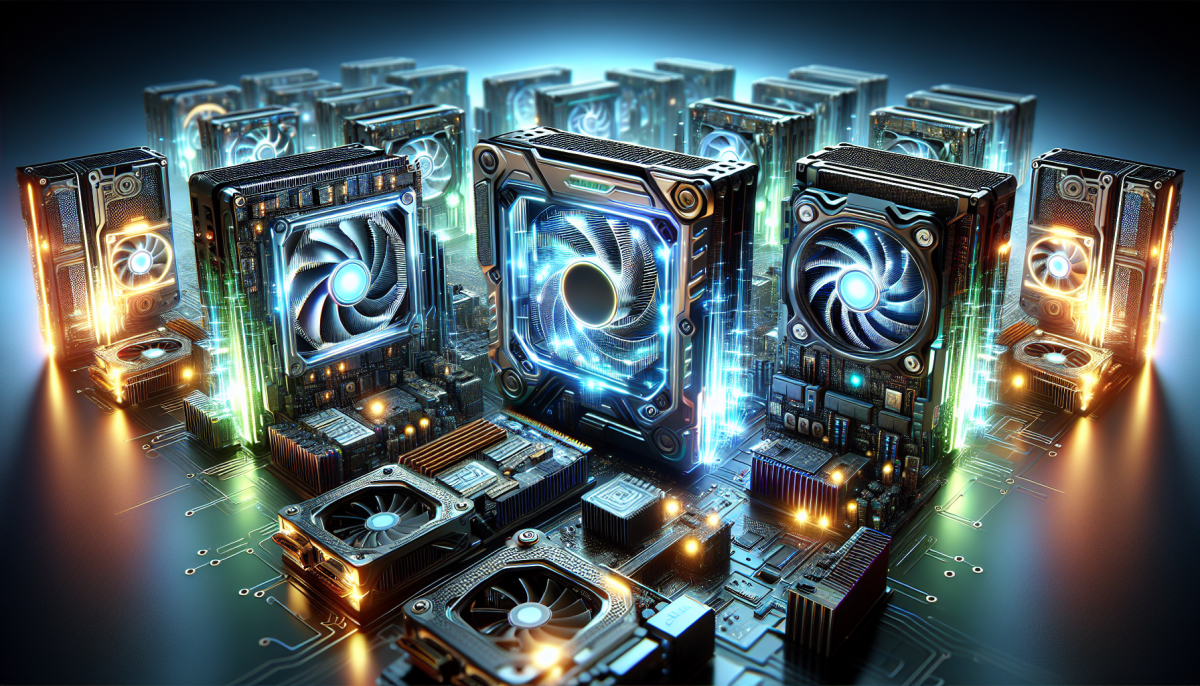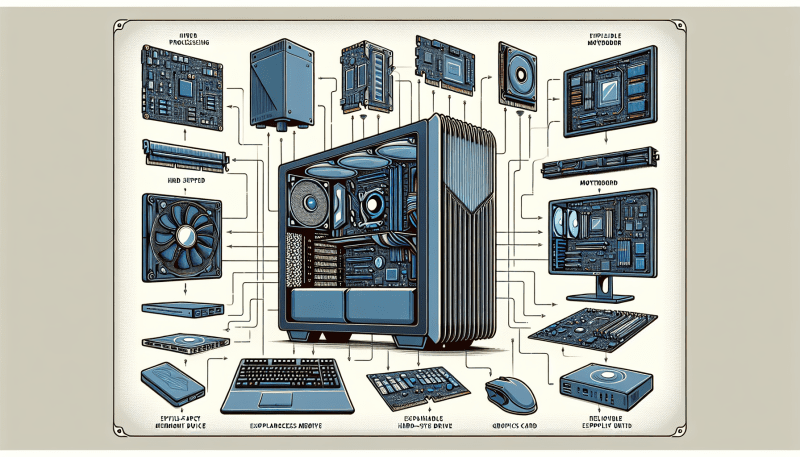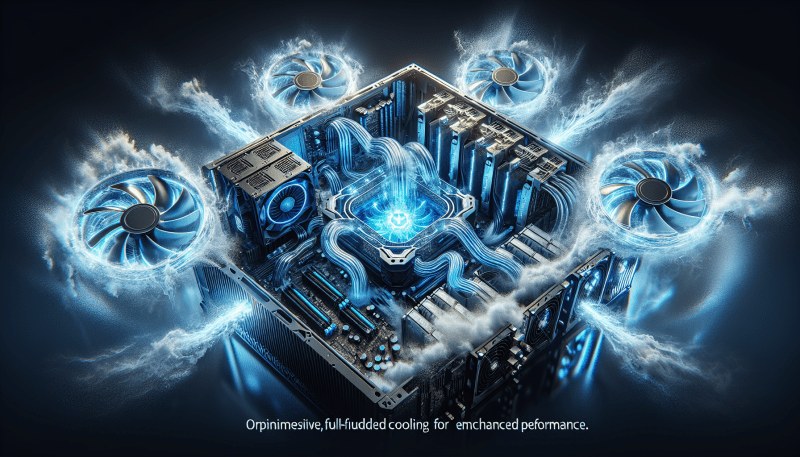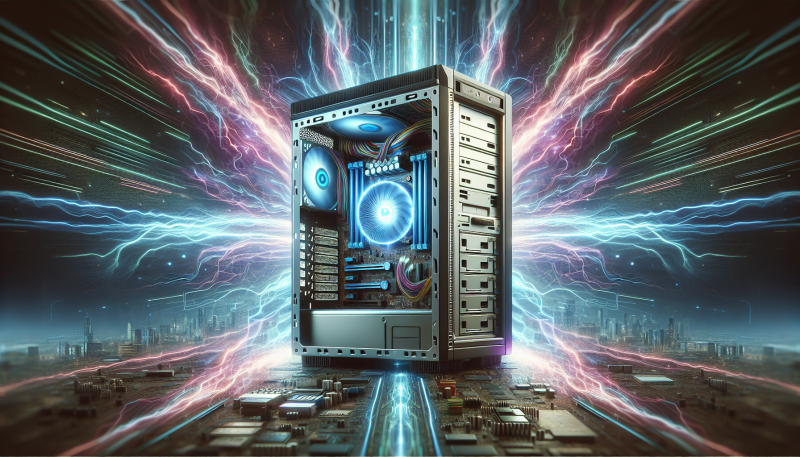When choosing a GPU for gaming in 2024, there are a few key factors to keep in mind to help you make the best choice for your needs.
1. Performance: Look for a GPU that can handle the games you play at your desired settings. Check benchmarks and reviews to see how different models perform in real-world gaming scenarios. You want a card that keeps your frame rates high and gives you smooth gameplay.
2. VRAM: Video memory (VRAM) is crucial, especially for high-resolution gaming. For 1080p gaming, 6GB of VRAM is often enough, but if you’re looking to game at 1440p or 4K, aim for 8GB or more. More VRAM helps with loading textures and allows for better performance at higher resolutions and settings.
3. Power and Cooling: Make sure your power supply unit (PSU) can support the GPU you choose. Some high-end models require more power and efficient cooling systems. Look for GPUs with good reviews about their cooling ability, because a cooler GPU can maintain performance longer.
4. Ray Tracing and DLSS: If you’re into cutting-edge graphics, check if the GPU supports ray tracing and technologies like DLSS (Deep Learning Super Sampling). These features can make games look stunning while keeping frame rates up, providing an awesome balance of quality and performance.
Lastly, don’t forget to consider your budget. With so many options out there, it’s important to find a balance between performance and price that works for you!
Top GPUs for 2024 Gaming
Looking to upgrade your gaming rig in 2024? You’ll want a GPU that packs a punch and keeps up with the latest titles. There are some really great options out there this year that cater to all types of gamers, whether you're aiming for ultra settings at 1440p or just want something that gives you smooth gameplay at 1080p.
First up, the NVIDIA GeForce RTX 4070 Ti. It’s a solid choice for gamers who want great performance without breaking the bank. With ray tracing support and DLSS, you’ll get beautiful graphics and solid frame rates, making your gaming experience immersive. Plus, it runs cool and quiet, so no need to worry about overheating.
If you’re into high refresh rates, check out the AMD Radeon RX 7900 XT. This card excels in delivering high frame rates, especially at 1440p. It’s perfect for competitive gaming where every millisecond counts. Plus, it offers a fantastic value for the performance you’re getting, making it a popular pick this year.
Don’t overlook the NVIDIA GeForce RTX 4060 if you want a more budget-friendly option. This card allows for smooth 1080p gaming on the latest titles, and it does a great job with ray tracing too. It's compact, which is great for smaller builds, and energy-efficient to boot.
Lastly, if you’re looking for something more ultra, the AMD Radeon RX 7900 XTX is worth considering. It’s a beast for 4K gaming and handles everything you throw at it with ease, including the latest heavy hitters. With a bit of extra cash, this is the one to go for if you want top-tier performance.
Budget Picks That Deliver Quality
When it comes to gaming on a budget, you don’t have to sacrifice quality for price. There are plenty of GPUs out there that deliver solid performance without breaking the bank. Here are some budget picks that are making waves in 2024.
NVIDIA GeForce GTX 1660 Super
AMD Radeon RX 6500 XT
NVIDIA GeForce RTX 3050
All of these options prove you don't need to spend a fortune to enjoy a great gaming experience. Focus on your gaming preferences and what feels right for your setup, and you'll be ready to jump into the action without any worries!
Tips for Installing Your New GPU
Installing your new GPU can feel a bit intimidating, but with the right steps, you’ll be gaming in no time! First things first, make sure you have the right tools handy: a screwdriver, some anti-static wrist straps, and a little bit of patience.
Start by turning off your PC and unplugging it. Safety first! Open your case and locate your current GPU. If this is your first time, don’t worry. Just look for the large card connected to your motherboard. You’ll need to carefully disconnect any power cables. If it’s screwed in, remove those screws too.
Now, gently pull the old GPU out of its slot. Don’t force it; it should come out smooth. Then, it’s time for the new GPU. Line it up with the PCIe slot on your motherboard. Push it in firmly until you hear a click. Secure it with screws you removed earlier and reconnect any power cables. Now it’s ready!
Before you close your case, double-check all your connections. Once everything looks good, close the case and plug your PC back in. Boot it up and install the latest drivers for your new GPU. This is key to making sure it performs at its best.



